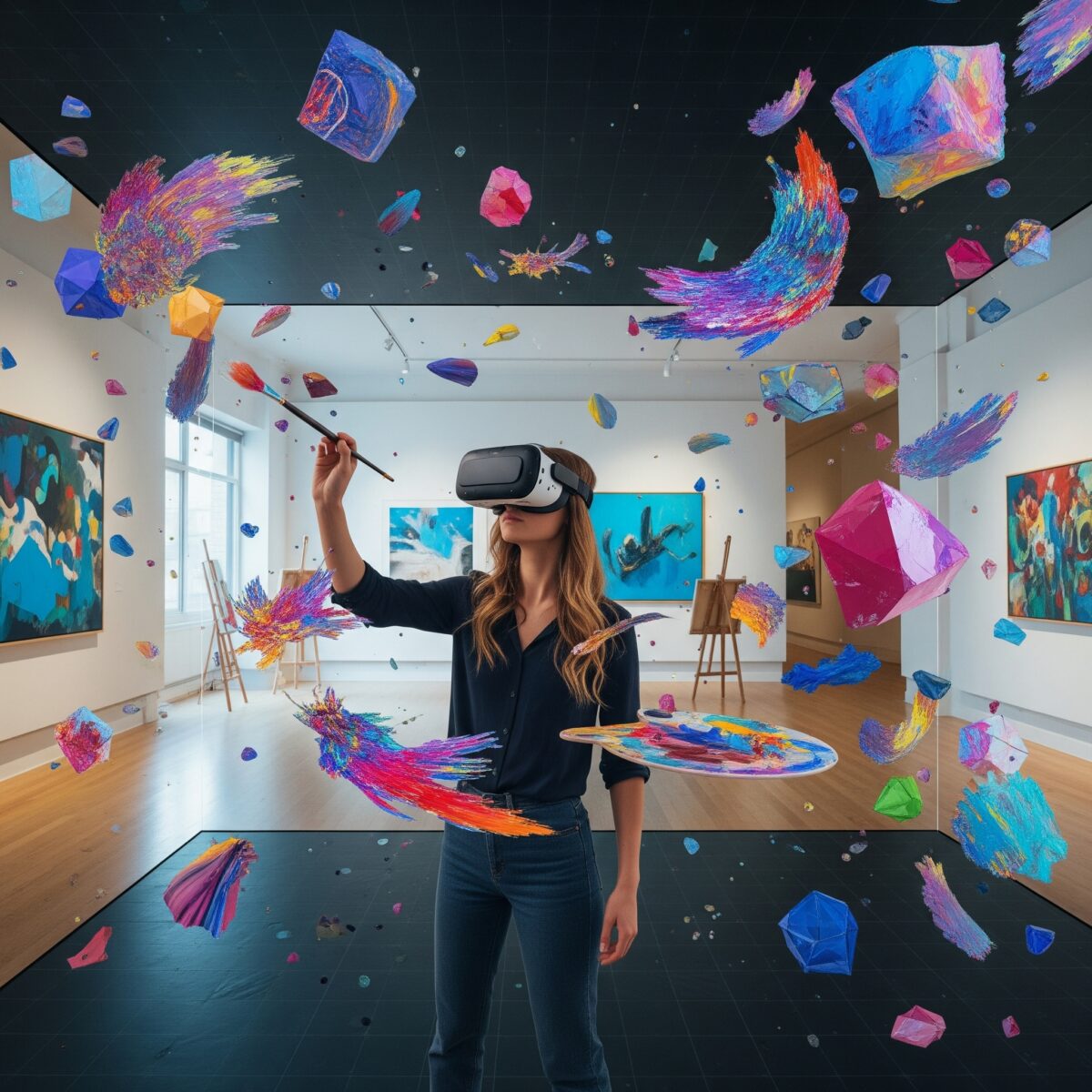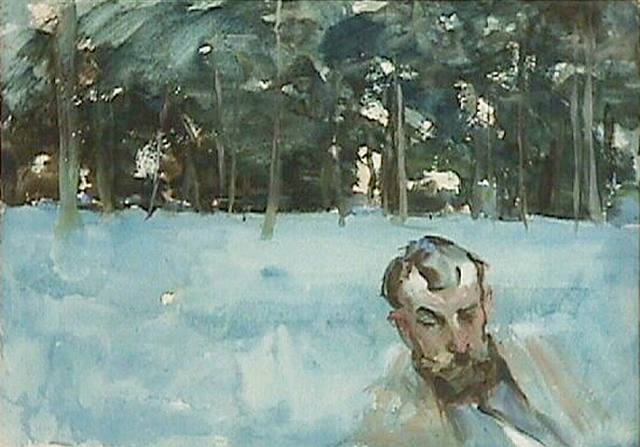Discover how Contemporary Painting Artists are reshaping the art world with cutting-edge techniques, technology, and bold new voices that are defining creativity for the 21st century.
Contemporary painting isn’t just about putting paint on canvas anymore. Today’s artists are digital pioneers, social activists, and creative rebels who use everything from artificial intelligence to virtual reality to express their vision. Whether you’re an art collector, aspiring artist, or simply curious about what’s happening in galleries worldwide, this comprehensive guide will take you inside the dynamic world of contemporary painting.
Podcast on The World of Contemporary Art
What Makes Contemporary Painting Different from Traditional Art?
Contemporary painting emerged in the 1970s as artists began breaking away from traditional painting techniques and subjects. Unlike classical painting that focused on technical perfection and established themes, contemporary artists embrace experimentation, social commentary, and technological innovation.
Key characteristics of contemporary painting:
- Mixed media approaches – Artists combine traditional paints with digital elements, found objects, and unconventional materials
- Social and political themes – Many works address current issues like climate change, identity, and social justice
- Technology integration – From AI-generated elements to augmented reality experiences
- Global perspectives – Artists from diverse cultural backgrounds contribute unique viewpoints
- Interactive elements – Viewers often become part of the artistic experience
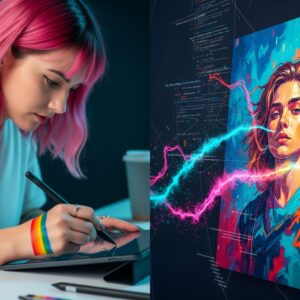
The line between painting and other art forms has blurred significantly. Contemporary painters might incorporate photography, sculpture, performance, or digital media into their work, creating immersive experiences that challenge traditional definitions of painting.
Revolutionary Artists Shaping Contemporary Painting Today
Social Justice Pioneers
Kehinde Wiley has revolutionized portraiture by placing Black subjects in classical European painting styles. His vibrant, ornate backgrounds and regal poses challenge art historical narratives while celebrating Black identity and culture. His work demonstrates how contemporary artists are using art for change.
Kara Walker uses silhouettes and large-scale installations to explore themes of race, gender, and power in American history. Her work confronts uncomfortable truths about slavery and its ongoing impact on society.
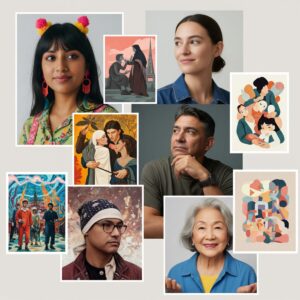
Ai Weiwei combines traditional Chinese artistic techniques with contemporary political commentary. His paintings and mixed-media works address human rights, censorship, and cultural identity in an increasingly globalized world.
Digital Art Innovators
Refik Anadol creates stunning data paintings that visualize machine learning algorithms and artificial intelligence processes. His work bridges the gap between technology and traditional artistic expression.
Casey Reas develops custom software to create generative paintings that evolve over time. His process-based approach questions the role of the artist in an age of algorithmic creation.
Mario Klingemann uses neural networks and machine learning to create portraits that challenge our understanding of creativity and authorship in art.
Neo-Expressionist Masters
Gerhard Richter continues to push boundaries with his squeegee paintings and photorealistic works that blur the line between abstraction and representation.
Cecily Brown creates dynamic, gestural paintings that combine figurative elements with abstract expressionist techniques, often exploring themes of sexuality and violence.
David Hockney has embraced digital tools like the iPad to create vibrant pool paintings and landscapes that maintain his signature style while incorporating new technologies.
50+ Contemporary Painting Artists
Revolutionizing Art in 2025: From AI Pioneers to Social Justice Champions
| Artist Name | Nationality | Movement/Style | Notable Works & Techniques |
|---|---|---|---|
| Kehinde Wiley | American | Social Justice | Revolutionary portraiture placing Black subjects in classical European painting styles with vibrant, ornate backgrounds |
| Kara Walker | American | Social Justice | Silhouettes and large-scale installations exploring race, gender, and power in American history |
| Ai Weiwei | Chinese | Political Art | Combines traditional Chinese techniques with contemporary political commentary on human rights and censorship |
| Refik Anadol | Turkish | Digital Art | Creates stunning data paintings visualizing machine learning algorithms and AI processes |
| Casey Reas | American | Digital Art | Develops custom software for generative paintings that evolve over time using algorithmic processes |
| Mario Klingemann | German | Digital Art | Uses neural networks and machine learning to create portraits challenging creativity and authorship |
| Gerhard Richter | German | Neo-Expressionism | Squeegee paintings and photorealistic works blurring lines between abstraction and representation |
| Cecily Brown | British | Neo-Expressionism | Dynamic, gestural paintings combining figurative elements with abstract expressionist techniques |
| David Hockney | British | Digital Art | Embraces digital tools like iPad for vibrant pool paintings and landscapes with signature style |
| Zeng Fanzhi | Chinese | Contemporary | Blends traditional Chinese techniques with modern themes for local and global audiences |
| Zhang Xiaogang | Chinese | Contemporary | Explores Chinese identity and history through surreal family portraits and cultural commentary |
| Subodh Gupta | Indian | Contemporary | Incorporates traditional Indian materials and motifs into contemporary painting contexts |
| Bharti Kher | Indian | Mixed Media | Combines traditional Indian bindis with contemporary painting techniques and themes |
| Julie Mehretu | Ethiopian-American | Abstract | Large-scale abstract paintings incorporating architectural elements and urban mapping |
| Banksy | British | Street Art | Anonymous street artist creating politically charged stencil paintings and installations |
| Yayoi Kusama | Japanese | Contemporary | Infinity installations and polka dot paintings exploring repetition and infinity concepts |
| Takashi Murakami | Japanese | Pop Art | Colorful paintings blending Japanese pop culture with fine art traditions |
| Kaws | American | Pop Art | Cartoon-inspired paintings and sculptures bridging fine art and commercial design |
| Kerry James Marshall | American | Social Justice | Paintings celebrating Black life and challenging art historical representation |
| Amy Sherald | American | Contemporary | Portraits with grayscale skin tones and vibrant clothing exploring identity and representation |
| Marlene Dumas | South African | Figurative | Expressive paintings exploring identity, sexuality, and mortality through portraiture |
| Peter Doig | Scottish | Contemporary | Dreamlike landscapes combining photography and painting with mysterious narratives |
| Neo Rauch | German | Figurative | Surreal paintings blending East German history with contemporary themes |
| Luc Tuymans | Belgian | Contemporary | Muted palette paintings addressing historical trauma and collective memory |
| Anselm Kiefer | German | Neo-Expressionism | Large-scale paintings incorporating unconventional materials exploring German history |
| Jean-Michel Basquiat | American | Neo-Expressionism | Graffiti-inspired paintings addressing racism, identity, and social inequality |
| Cy Twombly | American | Abstract | Scribbled paintings and sculptures combining text and mark-making |
| Anselm Reyle | German | Contemporary | Metallic paintings and sculptures using unconventional materials and techniques |
| Beatriz Milhazes | Brazilian | Contemporary | Colorful paintings and collages celebrating Brazilian culture and patterns |
| Kehinde Wiley | American | Social Justice | Revolutionary portraiture placing Black subjects in classical European painting styles |
| Shirin Neshat | Iranian | Political Art | Photography and painting exploring gender, identity, and politics in contemporary Islam |
| Wangechi Mutu | Kenyan | Contemporary | Collage and painting exploring African femininity, colonialism, and globalization |
| Glenn Ligon | American | Social Justice | Text-based paintings exploring race, sexuality, and identity in American society |
| Cindy Sherman | American | Contemporary | Photographic paintings and self-portraits exploring female identity and representation |
| Kara Walker | American | Social Justice | Silhouette paintings and installations confronting slavery and American history |
| Frank Stella | American | Abstract | Geometric paintings pushing boundaries of shape, color, and three-dimensional form |
| Ellsworth Kelly | American | Abstract | Minimalist paintings exploring pure color and form relationships |
| Sean Scully | Irish | Abstract | Stripe paintings exploring color relationships and emotional expression |
| Howard Hodgkin | British | Abstract | Gestural paintings capturing memories and emotional experiences |
| Brice Marden | American | Abstract | Monochromatic and linear paintings exploring Eastern philosophy and calligraphy |
| Agnes Martin | American | Minimalism | Grid paintings achieving transcendence through subtle color and line variations |
| Robert Ryman | American | Minimalism | White paintings exploring texture, surface, and material properties |
| Bridget Riley | British | Op Art | Optical illusion paintings creating movement and visual effects through pattern |
| Chuck Close | American | Photorealism | Large-scale portraits using grid systems and various painting techniques |
| Alex Katz | American | Contemporary | Simplified portraits and landscapes with bold colors and clean lines |
| Elizabeth Peyton | American | Contemporary | Intimate portraits of friends, celebrities, and historical figures with loose brushwork |
| John Currin | American | Figurative | Technically skilled paintings combining old master techniques with contemporary subjects |
| Lisa Yuskavage | American | Figurative | Figurative paintings exploring femininity, sexuality, and gender stereotypes |
| Kehinde Wiley | American | Social Justice | Portraits reimagining classical European art with contemporary Black subjects |
| Rashid Johnson | American | Contemporary | Mixed media paintings incorporating black soap, wax, and cultural references |
| Mark Bradford | American | Abstract | Collage paintings using found materials to explore urban environments and social issues |
| Oscar Murillo | Colombian | Contemporary | Large-scale paintings on canvas incorporating text and cultural migration themes |
How Artificial Intelligence is Transforming Contemporary Painting
Artificial intelligence has become a powerful tool for contemporary painters, offering new ways to create, collaborate, and conceptualize art. This technological revolution is changing how artists approach their craft and challenging traditional notions of creativity.
AI as Creative Partner
Many contemporary painters now use AI as a collaborative partner rather than a replacement for human creativity. Artists input their ideas, sketches, or concepts into AI systems, which then generate variations, suggestions, or entirely new elements that the artist can incorporate into their work.
Popular AI tools for painters:
- DALL-E 2 and Midjourney for generating initial concepts and compositions
- Adobe Firefly for creating textural elements and backgrounds
- RunwayML for style transfer and image manipulation
- Artbreeder for evolving portraits and landscapes
Learn more about AI art prompt engineering techniques to maximize your creative output with these tools.
The Ethics of AI in Art
The integration of AI in contemporary painting raises important questions about authorship, originality, and the value of human creativity. Some artists embrace AI as a new medium, while others worry about its impact on traditional artistic skills and the art market.
Key ethical considerations include:
- Attribution: Who owns the copyright when AI contributes to a painting?
- Training data: How do we ensure AI models respect artists’ intellectual property?
- Market impact: Will AI-generated art devalue human-created works?
- Authenticity: What makes a painting “authentic” in the age of AI?
For a deeper dive into these complex issues, explore our comprehensive guide on AI art ethics.
The Digital Revolution: NFTs and Contemporary Painting
Non-Fungible Tokens (NFTs) temporarily transformed how contemporary painters sell and display their work. While the NFT market has cooled significantly since its 2021 peak, it introduced important concepts about digital ownership and art accessibility.
The Rise and Fall of NFT Art
The NFT boom allowed digital painters to monetize their work in unprecedented ways. Artists like Beeple sold digital paintings for millions of dollars, while platforms like SuperRare and Foundation created new markets for digital art.
However, the NFT art market faced several challenges:
- Environmental concerns about blockchain energy consumption
- Market volatility with prices dropping dramatically
- Technical issues including broken links and lost files
- Speculation overshadowing artistic merit
Lessons from the NFT Era
Despite its challenges, the NFT movement taught valuable lessons about digital art ownership, artist royalties, and global art accessibility. Many contemporary painters now incorporate digital elements into their traditional works, creating hybrid pieces that exist both physically and digitally.
For more insights into this fascinating period, read our detailed analysis of NFT art and its impact on the contemporary art world.
Contemporary Painting Techniques and Materials
Today’s painters have access to an unprecedented range of materials and techniques, allowing for greater experimentation and expression than ever before.
Traditional Materials Reimagined
Contemporary painters often use traditional materials in innovative ways:
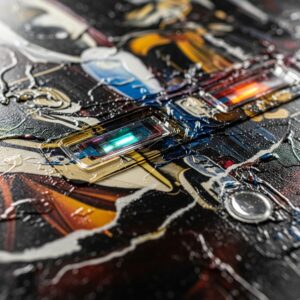
- Acrylic paints mixed with unconventional mediums like sand, fabric, or plastic
- Oil paints applied with non-traditional tools like credit cards, sponges, or digital styluses
- Watercolors combined with digital printing and collage elements
- Mixed media incorporating found objects, photographs, and digital prints
Digital Painting Techniques
Digital painting has become increasingly sophisticated, with artists using:
- High-resolution tablets like Wacom Cintiq or iPad Pro for precise control
- Painting software such as Procreate, Photoshop, or Corel Painter
- 3D modeling to create complex compositions and lighting effects
- Augmented reality to overlay digital elements onto physical paintings
If you’re interested in creating digital art that looks traditional, check out our guide on how to make digital art look traditional.
Experimental Approaches
Contemporary painters continuously push boundaries with experimental techniques:
- Bioart using living organisms as paint or canvas
- Light painting with programmable LEDs and projection mapping
- Interactive installations that respond to viewer presence or movement
- Collaborative works created by multiple artists or even AI systems
The Global Contemporary Painting Scene
Contemporary painting is truly international, with artists from every continent contributing unique perspectives and techniques to the global art conversation.
Emerging Art Markets
China has become a major force in contemporary painting, with artists like Zeng Fanzhi and Zhang Xiaogang achieving international recognition. Chinese contemporary painters often blend traditional techniques with modern themes, creating works that speak to both local and global audiences.
India has produced influential contemporary painters like Subodh Gupta and Bharti Kher, who incorporate traditional Indian materials and motifs into contemporary contexts.
Africa is experiencing a renaissance in contemporary painting, with artists like Kehinde Wiley (American-Nigerian) and Julie Mehretu (Ethiopian-American) gaining international acclaim.
Learn more about how location has historically influenced art and continues to shape contemporary expression.
Art Fairs and Exhibitions
Major contemporary painting exhibitions showcase the medium’s evolution:
- Art Basel (Miami, Basel, Hong Kong) features cutting-edge contemporary painters
- Frieze Art Fair (London, Los Angeles, New York) highlights emerging and established artists
- Venice Biennale presents national pavilions featuring contemporary painting innovations
- Documenta (Kassel, Germany) occurs every five years and sets contemporary art trends
For more insights into the art world’s major venues, explore our guide to art exhibitions.
Collecting Contemporary Painting: A 2025 Perspective
The contemporary painting market has evolved significantly, with new collectors entering the scene and established collectors adapting to changing trends.
Market Trends
Demographic shifts: Younger collectors (aged 25-40) now represent a significant portion of the market, often preferring artists who address social issues or use innovative techniques.
Online sales growth: Digital platforms have made contemporary painting more accessible, with online sales accounting for over 40% of the market.
Diversification: Collectors are increasingly interested in artists from underrepresented backgrounds, leading to greater diversity in the contemporary painting market.
For comprehensive insights into current trends, read our analysis of art market trends for 2025 and art market auction trends shaping 2025.
Investment Considerations
When collecting contemporary painting, consider:
- Artist trajectory: Look for artists with strong exhibition records and critical recognition
- Market demand: Research recent sales and auction results
- Condition and provenance: Ensure proper documentation and storage
- Personal connection: Choose works that resonate with your aesthetic preferences
Learn more about what makes paintings valuable and explore our art price calculator for valuation guidance.
The Future of Contemporary Painting
As we look toward the future, several trends are shaping the evolution of contemporary painting:
Sustainability and Eco-Consciousness
Environmental concerns are influencing contemporary painters to:
- Use eco-friendly materials and non-toxic paints
- Create works that address climate change and environmental destruction
- Develop sustainable practices in studios and exhibitions
- Explore biodegradable and recyclable art materials
Discover more about eco-friendly painting techniques and sustainable art making.
Virtual and Augmented Reality
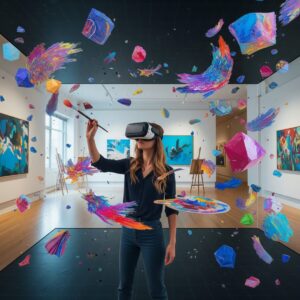
VR painting allows artists to create three-dimensional works in virtual space, while AR applications enable viewers to interact with paintings in new ways. These technologies are expanding the definition of what constitutes a painting.
Collaborative Creation
Crowdsourced art projects and collective painting initiatives are becoming more common, with artists using social media and online platforms to involve global audiences in their creative process.
Personalized Art Experiences
AI-driven customization allows viewers to experience paintings in personalized ways, with colors, compositions, or elements adapting to individual preferences or emotional states.
How to Appreciate Contemporary Painting
Understanding contemporary painting requires an open mind and willingness to engage with new ideas and techniques.
Developing Your Eye
Visit galleries and museums regularly to see contemporary paintings in person. Online images can’t fully capture the texture, scale, and presence of physical works.
Read artist statements and exhibition catalogs to understand the concepts and contexts behind contemporary paintings.
Attend artist talks and panel discussions to gain insights into creative processes and artistic intentions.
For a comprehensive approach to understanding art, read our guide on how to appreciate art.
Building Your Knowledge
Study art history to understand how contemporary painting relates to and builds upon previous movements and traditions. Our guides on painting styles and movements and 20th century art movements provide excellent starting points.
Engage with diverse perspectives by exploring art from different cultures, backgrounds, and viewpoints. Learn about cultural fusion in art and how it’s shaping contemporary expression.
Follow art criticism in publications like Artforum, Art in America, and online platforms to stay current with trends and debates.
Starting Your Journey in Contemporary Painting
Whether you’re interested in creating, collecting, or simply appreciating contemporary painting, here’s how to begin:
For Aspiring Artists
Experiment with different media – Don’t limit yourself to traditional paints. Try digital tools, mixed media, and unconventional materials. Start with our 20 easy acrylic painting ideas or explore abstract painting ideas.
Develop your unique voice – While learning from established artists is important, focus on developing your personal style and perspective. Our guide to famous artists and their styles can provide inspiration.
Engage with the community – Join artist groups, attend workshops, and participate in local art events. Learn how to start an art business in 2025 if you’re considering a professional path.
Document your process – Keep a visual diary of your work and artistic development. Consider creating a strong online presence with our guide on building your art brand.
For New Collectors
Start small – Begin with emerging artists and affordable works to develop your taste and knowledge. Consider art as a business investment.
Visit art fairs – These events offer opportunities to see many artists’ work and meet gallery representatives.
Build relationships – Develop connections with gallery owners, curators, and other collectors.
Trust your instincts – While market trends are important, choose works that genuinely speak to you.
The Lasting Impact of Contemporary Painting
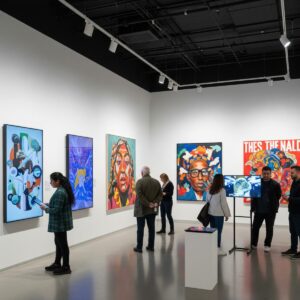
Contemporary painting continues to evolve and challenge our understanding of art, creativity, and human expression. As technology advances and global perspectives broaden, this dynamic medium will undoubtedly continue to surprise, provoke, and inspire.
The artists working today are not just creating beautiful objects – they’re documenting our times, challenging social norms, and pushing the boundaries of what’s possible in visual art. Their work will provide future generations with a window into our complex, interconnected, and rapidly changing world.
Whether you’re drawn to the technical innovation of AI-assisted paintings, the social commentary of activist artists, or the pure aesthetic pleasure of abstract works, contemporary painting offers something for everyone. The key is to remain open, curious, and engaged with the incredible diversity of voices and visions that define this exciting field.
Understanding why art matters in our contemporary world helps us appreciate not just individual works, but the broader cultural significance of painting as an evolving art form.
Ready to explore more about painting techniques and art history? Check out our comprehensive guides on painting techniques for beginners and famous painters throughout history. For practical advice on creating your own contemporary works, explore our painting supplies guide and painting ideas on Pinterest.

